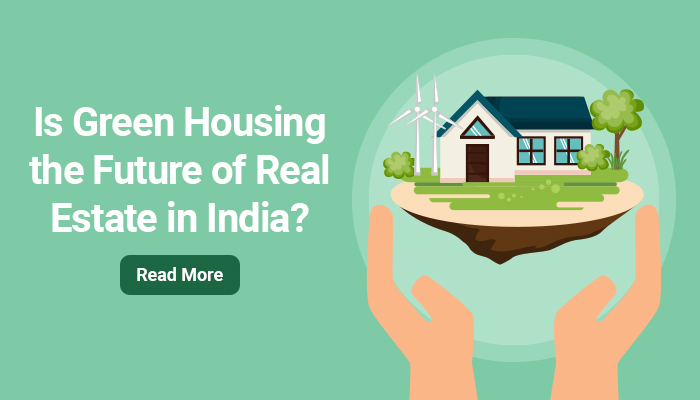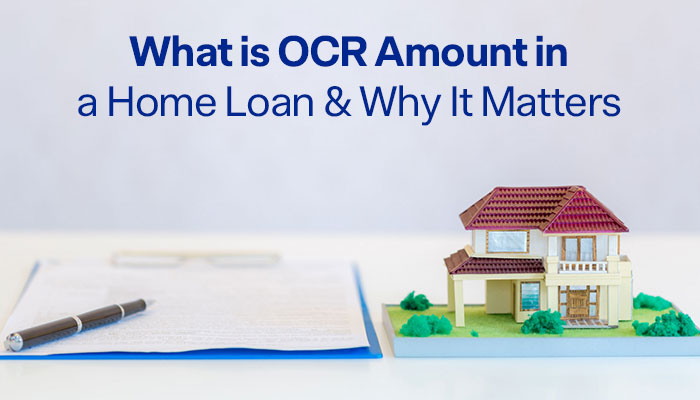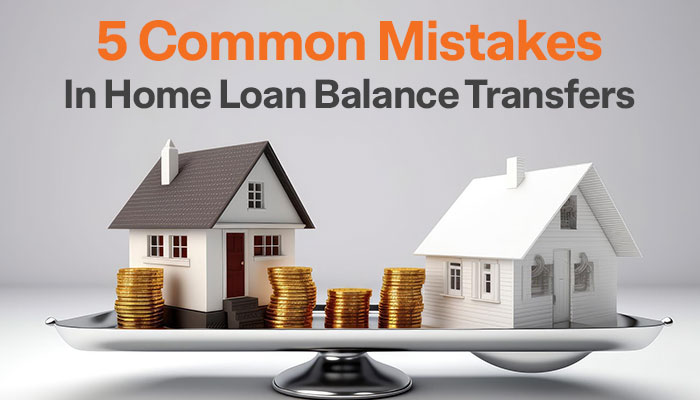Will Green Housing be the Future of Real Estate in India

In the face of rapid urbanisation and escalating energy demands, the future of real estate in India is morphing towards a greener horizon. The buzz around green building and sustainable living has not only caught global attention but is making significant strides in India too. As real estate in India navigates through the pressures of environmental sustainability and affordable housing, a new dawn of green homes is emerging as a promising solution. These eco-friendly places are not just about energy efficiency, but they encapsulate innovative designs, sustainable materials, and leverage advanced technologies to mitigate environmental impacts.
The following article will discuss how green and sustainable homes are carving the future of real estate in India, shedding light on the myriad facets of this green revolution.

What are Green Homes?
Green homes embody the essence of the green building concept that harmonises our living spaces with the environment. Unlike regular homes, green homes are designed to make efficient use of energy and water resources. They are crafted to be more efficient, thus generating less waste and reducing the overall operational costs for the residents.
At the heart of a green home is the idea of being an eco-friendly house. This implies that from the construction phase itself, materials and technologies that are friendly to the environment are chosen. For instance, such homes may have solar panels to capture solar energy, water-saving fixtures to reduce water wastage and better insulation to keep the home warm in winter and cool in summer.
Current Status of Green Homes in India
The movement towards green building is gradually gaining momentum in India. Here's a glimpse of the current status of Green Homes in India:
- Increasing Numbers: As of 2018, almost 14 lakh houses in India adopted the green building tag, which equates to about 6.33 billion square feet. Although this constituted merely 5% of the total residential properties in the country at the time, the aim was to achieve a 10 billion square feet green building footprint by 2022. Moreover, in 2023, it's noted that 4 lakh homes in India are seeking green certification.
- Broadening Scope: The concept of green buildings is expanding beyond residential homes to include hospitals, hotels, offices, institutions, colleges, convention centres, and IT parks. From a mere one green building in 2001, the numbers are anticipated to surge to about one lakh green buildings across India by 2025.
- Certification and Rating Systems: Institutions like the Indian Green Building Council (IGBC) have been pivotal in promoting the green architecture movement by setting up rating systems like the IGBC Green Homes.
- Government Incentives: The Indian government has been incentivizing builders and organizations to construct green buildings by offering tax benefits and low-interest loans, which is playing a significant role in propelling the green home movement forward.
Are Green Buildings the Future of Sustainable India?
The surge in the green building concept in India is a reflection of a broader shift towards sustainable living, with data indicating a promising trajectory. From a single green project in 2003, India now has over 4,500 IGBC registered projects spanning across 4.53 billion square feet of space in various climatic zones of the country, positioning it among the top five nations globally with the largest registered green building footprint.
Advantages of Green Housing
Listed below are the advantages of green homes in India:
- Health and Wellness: Green buildings improve air quality and reduce respiratory problems.
- Environment-Friendly: Sustainable building saves power and water and promotes recycling.
- Increased Revenue: Green architecture allows for higher sale and rental values.
- Lower Costs: Ecohouses cut power use by 30%-40%, reducing electricity bills and recovering extra initial costs in 2-5 years.
- Government Incentives: Tax rebates and other benefits are offered for green housing projects in India.
- Marketing Tool: Green building certifications attract more customers and investors for builders.

Key Takeaway
The move towards green building is growing in India. It's clear that having green homes and eco houses is good for both people and our planet. These homes help save energy, reduce waste, and are better for our health. With the help of the government and more people understanding the benefits, green architecture is becoming more common. All these steps are taking us closer to a future where green homes could be a big part of the future of real estate in India. This is a positive change that will help make a better and greener India for everyone.
To learn more about this, please visit the Green Value Partner.
FAQs
1. What is the green building concept?
The green building concept is about designing and constructing buildings in a way that uses fewer resources, reduces waste and pollution, and creates a healthier environment for people living or working there.
2. What is the current status of green homes in India?
Green building is gaining momentum in India with increasing numbers of green homes and buildings. Institutions like IGBC are promoting green architecture, and the government is offering incentives to boost the green home movement.
3. What are the economic benefits of green housing?
Green housing can provide higher sale and rental values, lower operational costs due to reduced utility bills, and various government incentives like tax rebates.
4. Why is the green building movement important for India?
The green building movement is crucial for India to tackle challenges of rapid urbanization, escalating energy demands, and environmental sustainability.
References :
https://worldgbc.org/article/the-growth-of-a-greener-india/

Tags
Disclaimer: The information contained in this post is for general information purposes only. IIFL Home Finance Limited (including its associates and affiliates) ("the Company") assumes no liability or responsibility for any errors or omissions in the contents of this post and under no circumstances shall the Company be liable for any damage, loss, injury or disappointment, etc. suffered by any reader. All information in this post is provided "as is", with no guarantee of completeness, accuracy, timeliness, or of the results, etc. obtained from the use of this information, and without warranty of any kind, express or implied, including, but not limited to warranties of performance, merchantability, and fitness for a particular purpose. Given the changing nature of laws, rules, and regulations, there may be delays, omissions, or inaccuracies in the information contained in this post. The information on this post is provided with the understanding that the Company is not herein engaged in rendering legal, accounting, tax, or other professional advice and services. As such, it should not be used as a substitute for consultation with professional accounting, tax, legal or other competent advisers. This post may contain views and opinions which are those of the authors and do not necessarily reflect the official policy or position of any other agency or organization. This post may also contain links to external websites that are not provided or maintained by or in any way affiliated with the Company and the Company does not guarantee the accuracy, relevance, timeliness, or completeness of any information on these external websites. Any/ all (Home/ Loan Against Property/ Secured Business Loan/ Balance Transfer/ Home Improvement Loan/ NRI Home Loan/ Home Loan for Uniformed Services) loan product specifications and information that may be stated in this post are subject to change from time to time, readers are advised to reach out to the Company for current specifications of the said (Home/ Loan Against Property/ Secured Business Loan/ Balance Transfer/ Home Improvement Loan/ NRI Home Loan/ Home Loan for Uniformed Services) loan.
 Login
Login






















